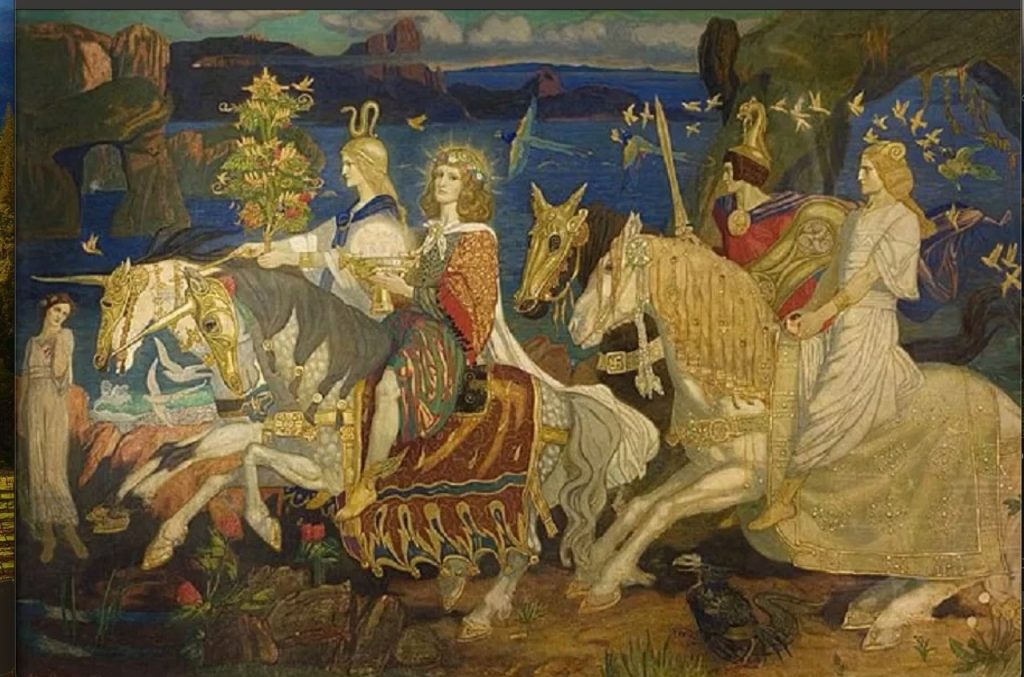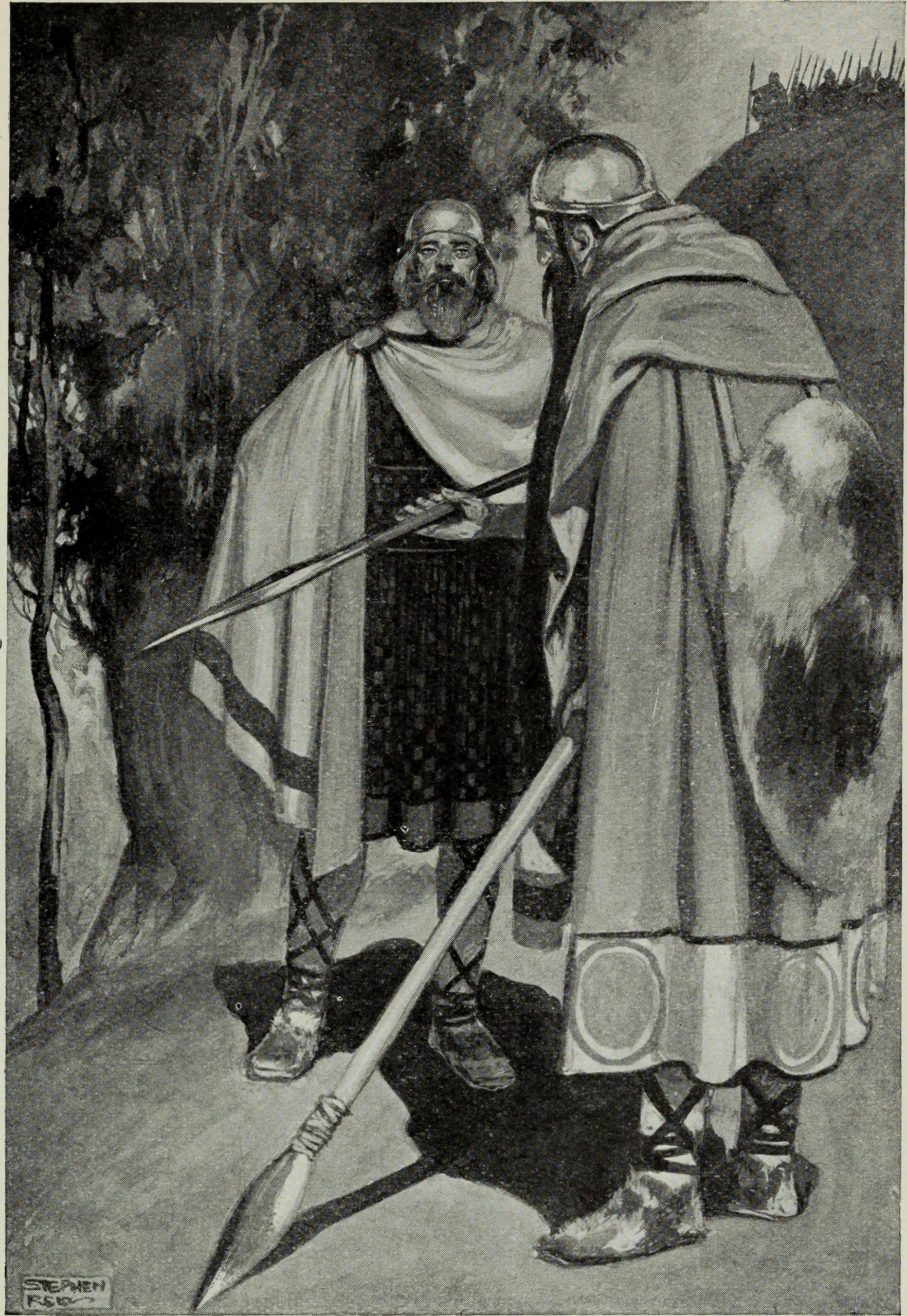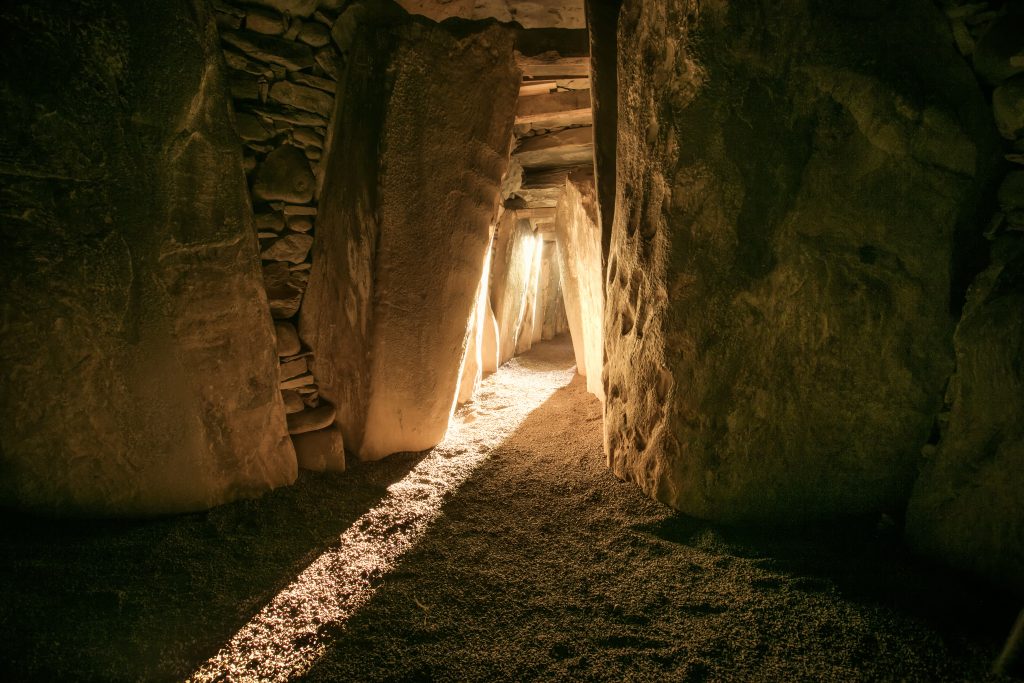Tuatha Dé Dannan
They came in the mist…
Ireland is a land of sacred spaces but none as mystical as Newgrange in County Meath. Newgrange is a prehistoric monument, a collection of Stone Age burial mounds and kerbstones, enormous rocks carved with art. It is a place older than the pyramids, a place of spiritual, archaeological and historic importance, and a place that brings seekers of the metaphysical from around the globe. Newgrange’s burial mounds date back six thousand years to the time when the Tuatha Dé Danann arrived in a cloud of mist.
The Tuatha Dé Danann (translated, “the folk of the goddess Danu”) were a powerful and transcendent tribe populated with wizards, shapeshifters, astronomers and druids. They were preternaturally gifted in building and historians credit them with creating the ancient tombs of Newgrange. It is their spirits haunting the burial mounds that give the place its power. As the chronicler of the Tuatha Dé Danann, Anthony Murphy, explains “They live in forever time, so that they are just as present today as they were in those mystical horizons of time in the distant past.” Note even their presence in today’s popular culture.
It was 3,200 BC when the Tuatha Dé Danann descended, naming their landing spot Brugh na Bóinne. The tribe was returning from their exile far north, cities where they learned the arts of magic, sorcery, and druidic secrets. They had come home to Ireland to usurp the usurpers, the current inhabitants, the nervous Fir Borgs and the evil Fomorians.The Tuatha Dé Danann proceeded to defeat both the Fir Bolg and Fomorians in two literal turf wars.
The Dé Danann had three leaders, the chief being Dagda, known, rather grandly, as The Dagda. The others were King Nuada of the Silver Hand (this moniker is explained further in the story) and Lugh of the Long arm (this wasn’t a reference to an outsized appendage but rather his ability to throw a spear great distances).

The Dagda was the fiercest of all his tribe and ruled for 80 years. His daughter, Brigid, was the blessed precursor of Ireland’s patron, St. Brigid. The Dagda’s singular blunder, blame it on lust, was marrying The Morrigan, ¹ a lurid seductress invested in strife, death and oversharing. Despite being in bad company, The Dagda remained benevolent, wanting to make sure his subjects were well-fed: he kept a Cauldron of Plenty always brimming with food; his fruit trees were never barren, and he would play his magic harp to insure healthy crops. Above all else, he feared famine would befall his people.
It was King Nuada who led the first battle, the fight against the Fir Bolgs. The armies, after much Fir Bolg stalling, met at the Battle of Moytura on the west coast. They were victorious but King Nuada lost his hand and in short order, his kingship – the Tuatha Dé Danann could be lookist at times, putting too great a value on personal appearance. King Nuada was summarily sacked but his replacement was loathed by all. The sticky situation was resolved when the court physician fashioned a working silver hand and King Nuanda, now Nuanda of the Silver Hand, was back in power. ²
The Fomorians were a race of demons and notoriously stingy, a trait still despised in Ireland. Worse, they didn’t respect poets and had no notion of hospitality, customs innate in the Tuatha Dé Danann and again, in the Irish. Their leader Balor³ was a giant with only one eye, so deadly it wreaked death and destruction when opened. It took four men, lifting a hook attached to the eyelid, to open the evil eye. He was a terrible parent too, keeping his only daughter imprisoned in chains, having once heard a prophecy he would be killed by her son.

Enter the third leader of the Tuatha Dé Danann, young Lugh⁴ of the Long Arm who joined the court of the restored King Nuada. Lugh was a beautiful and brave warrior, a spear-wielding horseman commissioned to lead the Tuatha Dé Danann against Fomorians in the Second Battle of Moytura. In the heat of warfare, Lugh saw Balor kill his beloved King Nuada; heartbroken, the youth pressed his men to victory.
As the Tuatha Dé Danann were gaining ground over the Fomorians, Lugh found himself eye-to-grotesque-eye with Balor, murderer of his king. Lugh aimed his slingshot and smashed Balor’s “venomous eye” through the back of his head. With that blow, Lugh secured victory for the Tuatha Dé Danann but, unbeknownst to him, had just killed his own grandfather, fulfilling the prophecy. Lugh was now the tribe’s new king.
Lugh’s son was the great warrior, Cuchulain. Besides giving Ireland its first superhero, Lugh bequeathed his name to Lughnasa, the feast celebrating the beginning of the harvest season.
Sometime around 1000 B.C., a band of brothers, the eight sons of the deceased Spanish King Milesius, sailed from Spain with their armies in a proto-Spanish Armada. They were coming to claim the land they believed to be theirs, a place they all saw in their dreams and named the Isle of Destiny. The Milesians were right: it was their destiny – they became the ancestors of the Celts of Ireland. The sons took their mother with them on the journey; they also brought along their spiritual leader, the bard, Amergin⁵. Upon his first glimpse of Ireland, the Isle of Destiny, Amergin was so inspired he shouted, “What land is better than this, Island of the setting sun?”
The Tuath de Dannan, among their many gifts, could see the future and knew the Milesians were coming to take their country. One of their wizards conjured as storm so violent, five of the brothers were killed before landfall. The surviving brothers and their army came ashore on May 1, the feast of Beltaine, the beginning of summer. After refusing to participate in Beltaine rites, the Milesians declared war on the Tuatha Dé Danann.
Having been out of combat for years, the Tuatha Dé Danann only had outmoded (bronze) weapons and soon lost the battle to the enemy with modern (iron) weapons. When it was all over the Milesians, the conquerors, were still dazzled by the conquered, and their cosmic gifts. They honored Tuatha Dé Danann throughout time and included their stories in the oral history of the Milesians.
When it came to armistice Amergin offered a plan to divide the island between the Tuatha Dé Danann and his own people: The Milesians would occupy the upper part of Eire and the conquered tribe would live underground in Otherworld in sidhe or burial mounds. By vanishing into the sidhe, the Tuatha Dé Danann could access portals to other realms, including Tír na Óg, “Land of the Forever Young” and become immortal. Only on Samhain (Oct. 31-Nov.1) would the ancient tribe emerge to walk among the living, thus giving the world Halloween, a fitting legacy for that team of magicians, wizards and druids.
Footnotes:
1 The Morrigan is a character in SMITE, multiplayer online battle arena (MOBA). She incites all wars.
2 George RR Martin shamelessly steals this story in Game of Thrones, giving behanded Jaime Lannister of Westeros a silver hand.
3 Balor battled the Avengers in Avalon wherein they drained his evil eye.
4 Lugh lives on as Lugh Tuatha Dé in the anime light novel (literature popular in Japan) The World’s Famous Assassin.
5 Amergin also pops up in the Marvel Cinematic Universe. At varying times he allied himself with the Black Knight and the Avengers.


Leave a Reply